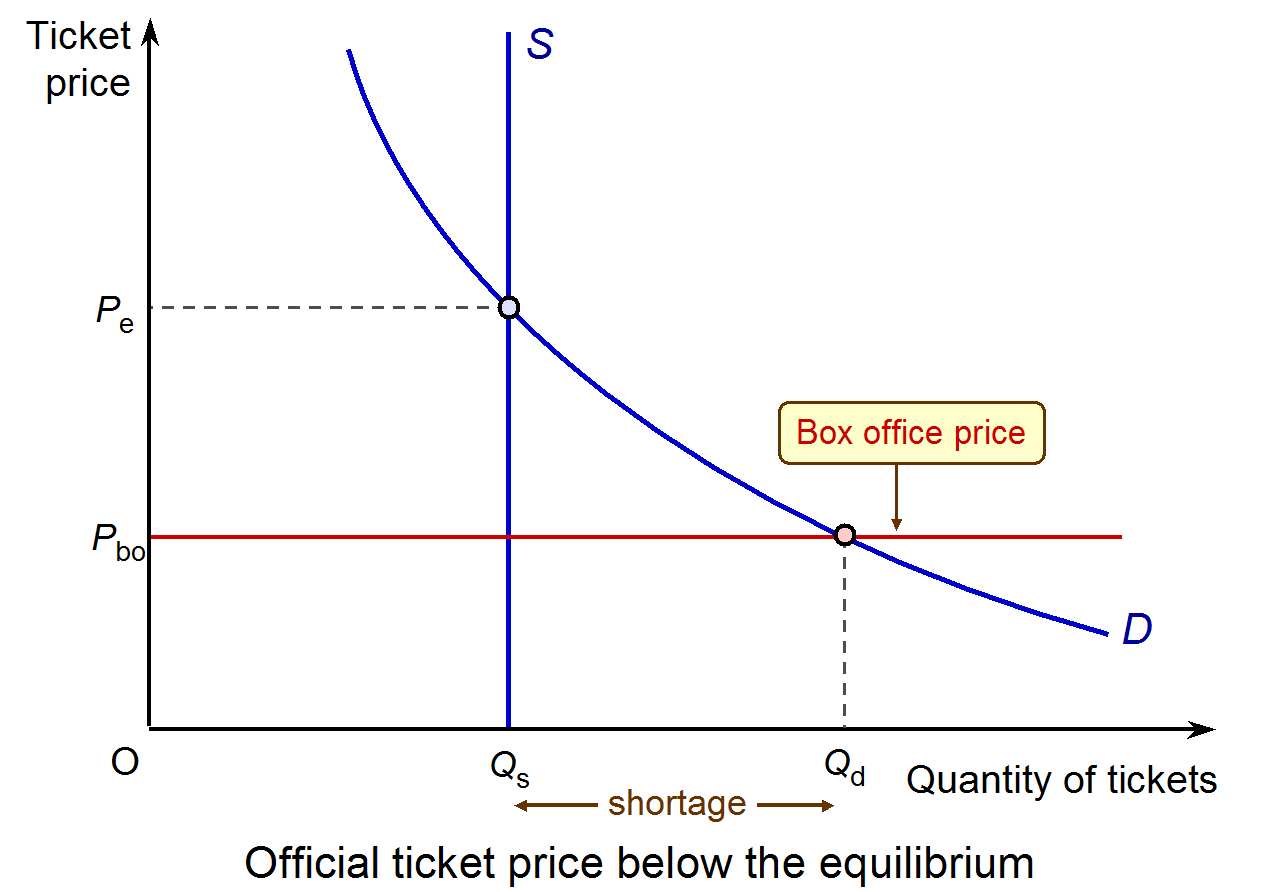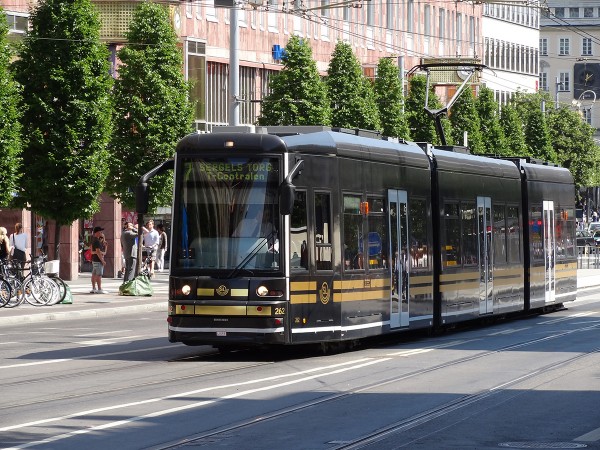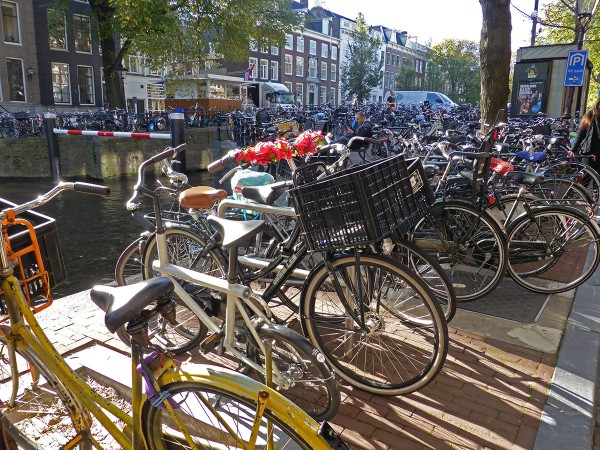 Can behavioural economics be applied to the case of Sweden? The Swedish government is trying this out by changing government policy in a way that may encourage its residents to change their behaviour.
Can behavioural economics be applied to the case of Sweden? The Swedish government is trying this out by changing government policy in a way that may encourage its residents to change their behaviour.
People in many countries in the world live in what is often called a ‘throwaway society’. If something breaks, it’s often easier and cheaper simply to get rid of it and buy a new one. But with changes in government policy, including VAT cuts on repairs to white goods, the objective is to encourage consumers to repair their goods, rather than buying new ones. This is also contributing towards the wider objective of sustainable consumption, which is being promoted by the Swedish government.
Per Bolund, who is one of Sweden’s six Green Ministers, spoke about this policy commenting that:
“Consumers are quite active in changing both what they buy and how they buy in Sweden … We believe that getting lower costs for labour is a big part in making it more rational to repair rather than just to buy cheap and throw away …If we don’t change the economic incentives the change will never come.”
Whether or not this policy works will take some time to see, but it’s certainly an interesting test of how changing incentives affect consumer behaviour. You can read about other examples of nudging in the following blog A nudge in the right direction?.
Articles
Waste not want not: Sweden to give tax breaks for repairs The Guardian, Richard Orange (19/9/16)
Can Sweden tackle the throwaway society? BBC News (20/9/16)
Trendy now, trash tomorrow Huffington Post, Kirsten Brodde (29/9/16)
Hong Kong needs a strategy quickly for dealing with waste South China Morning Post (27/9/16)
Questions
- If VAT on repairs falls, how will this affect consumer behaviour?
- Do you think there would be an income and a substitution effect from this change in government policy? What would they be?
- How is the Swedish government using incentives to change consumer behaviour?
- If it is cheaper to buy a new white good, then is it rational to buy a new one rather than repair an existing one?
- How effective do you think this policy would be in encouraging consumers to change their behaviour?
- Find some other examples of how people might be nudged to behave in ways that are in their own interest or that of society.

If you want a ticket for an event, such as a match or a concert, but the tickets are sold out, what do you do? Many will go to an agency operating in the ‘secondary market’. A secondary market is where items originally purchased new, such as tickets, company shares, cars or antiques, are put up for sale at a price that the market will bear.
The equilibrium price in a secondary market is where supply equals demand and the actual price will approximate to this equilibrium. In the case of tickets, this equilibrium price can be much higher than the original price sold by the venue or its agents. The reason is that the original price is below the equilibrium.
This is illustrated in the figure (click here for a PowerPoint). Assume that the total supply of tickets is Qs. Assume also that the official box office price is Pbo and that demand is given by the demand curve D. At the box office price demand exceeds supply by Qd – Qs. There is thus a shortage, with many fans unable to obtain a ticket at the official price. Many of you will be familiar with having to be as quick as possible to get hold of tickets where demand considerably outstrips supply. Events such as Glastonbury sell out within seconds of coming on sale.
and that demand is given by the demand curve D. At the box office price demand exceeds supply by Qd – Qs. There is thus a shortage, with many fans unable to obtain a ticket at the official price. Many of you will be familiar with having to be as quick as possible to get hold of tickets where demand considerably outstrips supply. Events such as Glastonbury sell out within seconds of coming on sale.
If you buy a ticket and then find out you cannot go to the event, you can sell the ticket on the secondary market through an online site or agency. Such agencies could be seen as providing a useful service as it means that otherwise empty seats will be filled. But if the equilibrium price is well above the original ticket price, there is the potential for huge gain by the agencies, who may pay the seller considerably less than the agency then sells the ticket to someone else.
What is more, the difference between the original price and the equilibrium price in the secondary market makes ticket touting, or ticket ‘scalping’, highly profitable. This is where people buy tickets with no intention of using them themselves but in order to sell them at much higher prices on the secondary market. Such ticket touting has been illegal for football matches since 1994 and was illegal for the 2012 London Olympics, but it is legal for plays, concerts, festivals and other events.
Ticket touts are often highly organised in obtaining tickets at official prices by buying early and using multiple credit cards and multiple identities to avoid systems that restrict the number of tickets issued to a card. They often use internet bots to mass purchase tickets the moment they go on sale.

Those in favour of ticket touting argue that the high price in the secondary market is just a reflection of demand and supply (see the IEA article below). Ticket touting allows tickets to be directed to people who value them most and will get the greatest benefit from it. What is more, banning ticket touting, so the argument goes, would simply drive it underground.
Those against argue on grounds of equity. Ticket prices set below the equilibrium are designed to give greater equality of access to fans. Rationing on a first-come first-served system, either on the internet or by a queue, is seen to be fairer than one by ability/willingness to pay. A poor person may be just as keen to go to an event as a rich person and gain just as much enjoyment from it, but cannot afford the high equilibrium price. What is more, non of the profit from the higher prices reaches the event organisers or the artists or players. Yet the mark-up and hence profit made by ticket touts can be massive, as the first Observer article below shows.
Various measures are being tried to prevent ticket touting. One is the use of paperless tickets, with the number of tickets limited per person and with people having to show their ticket on their phones along with ID at the door or gate. If a person cannot attend, then the solution is a system where they can give the ticket back to the box office (perhaps electronically) which will re-sell it for them at the official price.
A government-backed investigation, the Waterson review reported in May 2016 and recommended that touts should be licensed and that there should be harsher penalties for firms that flout consumer rights law as applying to ticket sales. Whether this would be sufficient to bring secondary market prices down significantly, remains to be seen. In the meantime, organisers do seem to be trying to find ways of beating the touts through smarter means of selling.
Articles
MP Nigel Adams calls for secondary ticket marketing to be reformed Music Week, James Hanley (14/9/16)
Iron Maiden go to war with ticket touts BBC News, Mark Savage (22/9/16)
 The new age of the ticket tout BBC World Tonight, Andrew Hosken (25/5/16)
The new age of the ticket tout BBC World Tonight, Andrew Hosken (25/5/16)
Government urged to help music industry tackle ticket touts The Guardian, Rob Davies (13/9/16)
Ticket touts face licensing threat The Guardian, Rupert Jones (26/5/16)
How the ticket touts get away with bleeding fans dry The Observer, Rob Davies and Rupert Jones (15/5/16)
What sorcery is this? A £140 ticket for new Harry Potter play now costs £8,327 The Observer, Rob Davies and Laurie Chen (14/8/16)
Ticket touts made $3m from the last Mumford & Sons tour. $0 went back to the music industry. Music Business Woldwide, Adam Tudhope (6/9/16)
This is tout of order – join the Daily Mirror campaign to beat rip-off ticket resales Daily Mirror, Nada Farhoud (19/9/16)
Ticket touts: A muggle’s game The Economist (20/8/16)
Can We Fight Back Against The Robot Touts Ruining Live Music? Huffington Post, Andy Webb (6/9/16)
In defence of ticket touts Institute of Economic Affairs, Steve Davies (25/2/15)
Report
Consumer protection measures applying to ticket resale: Waterson review Department for Business, Innovation & Skills and Department for Culture, Media & Sport 26/5/16)
Guide
#Toutsout MMF & FanFair Alliance September 2016
Questions
- Why can ticket touts sell tickets above the equilibrium price shown in the diagram?
- In what ways could ticket touts be said to be distorting the market?
- How do ticket touts reduce consumer surplus? Could they reduce it to zero?
- Why may allowing ticket touting to take place result in empty seats at concerts or other events?
- Would it be a good idea for event organisers to charge higher prices for popular events than they do at present, but still below the equilibrium
- How does the price elasticity of demand influence the mark-up that ticket touts can make? Illustrate this on a diagram similar to the one above.
- Is it in ticket touts’ interests to adjust prices as an event draws closer, just as budget airlines adjust seat prices as the plane fills up? Could organisers sell tickets in the primary market in this way with prices rising as the event fills up?
- Discuss the various ways in which the secondary ticket market could be reformed? To what extent do these involve reforms in the primary ticket market?
 Behavioural economists study how people’s buying, selling and other behaviour responds to various incentives and social situations. They don’t accept the simplistic notion that people are always rational maximisers. As the Livemint article below states, “According to behavioural economists, the human brain neither has the time nor the ability to process all the information involved in decision making, as assumed by the rational model.” Instead, rationality is bounded: people use simple rules of thumb in making decisions – rules they have developed over time in the light of experience.
Behavioural economists study how people’s buying, selling and other behaviour responds to various incentives and social situations. They don’t accept the simplistic notion that people are always rational maximisers. As the Livemint article below states, “According to behavioural economists, the human brain neither has the time nor the ability to process all the information involved in decision making, as assumed by the rational model.” Instead, rationality is bounded: people use simple rules of thumb in making decisions – rules they have developed over time in the light of experience.
So can people’s behaviour be altered by understanding their limited rationality? Advertisers are only too well aware of a number of psychological ‘tricks’ to change people’s purchasing behaviour. For example, wanting to be approved of by your friends is used by advertisers to sell various fashion products and toiletries. Often, people need only a relatively small ‘nudge’ to change the way they behave.
And it is not just advertisers who are using the insights of behavioural economics. Governments are increasingly trying to find ways of nudging people to behave in ways that are better for themselves or for society.

In 2010, David Cameron set up a ‘Nudge Unit’, formally know as ‘The Behavioural Insights Team‘. It has produced a number of academic papers on topics as diverse as tax compliance, incentives for university attendance, charitable giving in the workplace and using SMS reminders to reduce missed hospital appointments. The academic evidence can then be use as the basis for policy.
Another nudge unit has been set up in Australia (see second article below). The USA, Singapore and various other countries are increasingly using the insights of behavioural economics to devise policy to affect human behaviour.
Two recent pieces of work by the UK team concern ways of discouraging doctors from over-prescribing antibiotics and using encouraging text messages to FE students to reduce dropout rates. Another nudge has been used by the tax authorities (HMRC) who have been sending out texts to remind people to pay their taxes on time and to make them aware that they are being monitored. The message read, “Most people pay on time to avoid penalties”.
The articles below look at these recent initiatives and how human behaviour can be changed in a relatively low-cost way. In most cases this involves a simple nudge.
Articles
Nudge-unit trials reveal best ways to prod people Sydney Morning Herald, Nick Miller (29/8/15)
Government ‘nudge unit’ to attempt to change people’s behaviours Sydney Morning Herald, Nick Miller (15/9/16)
New frontiers of human behaviour Livemint, Biju Dominic (15/9/16)
Doctors ‘nudged’ into prescribing far fewer antibiotics New Scientist (15/9/16)
GPs handing out fewer antibiotics after warning of over-prescribing, says study BT (15/9/16)
Study of colleges shows ‘encouraging’ texts dramatically cut dropout rates FE Week, Paul Offord (22/7/15)
 The text messages getting teenagers better grades BBC Today Programme, David Halpern and Fiona Morey (15/9/16)
The text messages getting teenagers better grades BBC Today Programme, David Halpern and Fiona Morey (15/9/16)
Ping! Pay your tax now or face a penalty. HMRC sends out ‘threatening’ SMS texts to taxpayers The Telegraph, Christopher Hope (15/9/16)
Publications of Behavioural Insights Team
Publications list BIT
The Behavioural Insights Team’s Update Report: 2015–16: overview BIT (15/9/16)
The Behavioural Insights Team’s Update Report: 2015–16 BIT (15/9/16)
Blog BIT
Questions
- Explain what is meant by bounded rationality.
- Give some examples from your own behaviour of decisions made using rules of thumb.
- Should we abandon models based on the assumption of rational maximising behaviour (e.g. attempts to maximise consumer surplus or to maximise profit)?
- Find out some other examples of how people might be nudged to behave in ways that are in their own interest or that of society.
- How might people be nudged to eat more healthily or to give up smoking?
- To what extent can financial incentives, such as taxes, fines, grants or subsidies be regarded nudging? Explain.
- Why, do you think, the message by an Australian hospital, “if you attend, the hospital will not lose the $125 we lose when a patient does not turn up” was successful in reducing missed appointments by 20%, while the message, “if you do not attend, the hospital loses $125” was not as effective?
 A number of famous Business Schools in the UK and US such as MIT Sloan, NYU Stern and Imperial College have launched new programmes in business analytics. These courses have been nicknamed ‘Big Data finishing school’. Why might qualifications in this area be highly valued by firms?
A number of famous Business Schools in the UK and US such as MIT Sloan, NYU Stern and Imperial College have launched new programmes in business analytics. These courses have been nicknamed ‘Big Data finishing school’. Why might qualifications in this area be highly valued by firms?
Employees who have the skills to collect and process Big Data might help firms to successfully implement a pricing strategy that approaches first-degree price discrimination.
First-degree price discrimination is where the seller of a product is able to charge each consumer the maximum price he or she is prepared to pay for each unit of the product. Successfully implementing this type of pricing strategy could enable a firm to make more revenue. It might also lead to an increase in economic efficiency. However, the strategy might be opposed on equity grounds.
In reality, perfect price discrimination is more of a theoretical benchmark than a viable pricing strategy. Discovering the maximum amount each of its customers is willing to pay is an impossible task for a firm.
It may be possible for some sellers to implement a person-specific pricing strategy that approaches first-degree price discrimination. Firms may not be able to charge each customer the maximum amount they are willing to pay but they may be able to charge different prices that reflect customers’ different valuations of the product.
 How could a firm go about predicting how much each of its customers is willing to pay? Traditionally smaller sellers might try to ‘size up’ a customer through individual observation and negotiation. The clothes people wear, the cars they drive and their ethnicity/nationality might indicate something about their income. Second-hand car dealers and stall-holders often haggle with customers in an attempt to personalise pricing. The starting point of these negotiations will often be influenced by the visual observations made by the seller.
How could a firm go about predicting how much each of its customers is willing to pay? Traditionally smaller sellers might try to ‘size up’ a customer through individual observation and negotiation. The clothes people wear, the cars they drive and their ethnicity/nationality might indicate something about their income. Second-hand car dealers and stall-holders often haggle with customers in an attempt to personalise pricing. The starting point of these negotiations will often be influenced by the visual observations made by the seller.
The problem with this approach is that observation and negotiation is a time-consuming process. The extra costs involved might be greater than the extra revenue generated. This might be especially true for firms that sell a large volume of products. Just imagine how long it would take to shop at a supermarket if each customer had to haggle with a member of staff over each item in their supermarket trolley!! There is also the problem of designing compensation contracts for sales staff that provide appropriate incentives.
However the rise of e-commerce may lead to a very different trading environment. Whenever people use their smart phones, laptops and tablets to purchase goods, they are providing huge amounts of information (perhaps unconsciously) to the seller. This is known as Big Data. If this information can be effectively collected and processed then it could be used by the seller to predict different customers’ willingness to pay.
Some of this Big Data provides information similar to that observed by sellers in traditional off-line transactions. However, instead of visual clues observed by a salesperson, the firm is able to collect and process far greater quantities of information from the devices that people use.
For example, the Internet Protocol (IP) address could be used to identify the geographical location of the customer: i.e. do they live in a relatively affluent or socially deprived area? The operating system and browser might also indicate something about a buyer’s income and willingness to pay. The travel website, Orbitz, found that Apple users were 40 per cent more likely to book four or five star hotel rooms than customers who used Windows.
Perhaps the most controversial element to Big Data is the large amount of individual-level information that exists about the behaviour of customers. In particular, browsing histories can be used to find out (a) what types of goods people have viewed (b) how long they typically spend on-line and (c) their previous purchase history. This behavioural information might accurately predict price sensitivity and was never available in off-line transactions.
Interestingly, there has been very little evidence to date that firms are implementing personalised pricing on the internet. One possible explanation is that effective techniques to process the mass of available information have not been fully developed. This would help to explain the growth in business analytics courses offered by universities. PricewaterhouseCoopers recently announced its aim to recruit one thousand more data scientists over the next two years.
Another possible explanation is that firms fear a backlash from customers who are deeply opposed to this type of pricing. In a widely cited survey of consumers, 91% of the respondents believed that first-degree price discrimination was unfair.
Articles
Big data is coming for your purchase history – to charge you more money The Guardian, Anna Bernasek and DT Mongan (29/5/15)
Big data is an economic justice issue, not just a Privacy Problem The Huffington Post, Nathan Newman (16/5/15)
MIT’s $75,000 Big Data finishing school (and its many rivals) Financial Times, Adam Jones (20/3/16)
The Government’s consumer data watchdog New York Times, Natasha Singer (23/5/2015)
The economics of big data and differential pricing The Whitehouse blog, Jason Furman, Tim Simcoe (6/2/2015)
Questions
- Explain the difference between first- and third-degree price discrimination.
- Using an appropriate diagram, explain why perfect price discrimination might result in an economically more efficient outcome than uniform pricing.
- Draw a diagram to illustrate how a policy of first-degree price discrimination could lead to greater revenue but lower profits for a firm.
- Why would it be so difficult for a firm to discover the maximum amount each of its customers was willing to pay?
- Explain how the large amount of information on the individual behaviour of customers (so-called Big Data) could be used to predict differences in their willingness to pay.
- What factors might prevent a firm from successfully implementing a policy of personalised pricing?
 Two surveys have been released looking at the quality of life in cities and the levels of happiness of their residents. The first is a three-yearly Eurobarometer survey by the European Commission focusing on 83 European cities/conurbations. This survey finds that, despite growing concerns about immigration, terrorism and stagnant real incomes, levels of satisfaction have remained stable since the 2012 survey. In all except six cities, at least 80% of respondents say that they are satisfied to live in their city. The highest scores (above 98%) are in the north of Europe.
Two surveys have been released looking at the quality of life in cities and the levels of happiness of their residents. The first is a three-yearly Eurobarometer survey by the European Commission focusing on 83 European cities/conurbations. This survey finds that, despite growing concerns about immigration, terrorism and stagnant real incomes, levels of satisfaction have remained stable since the 2012 survey. In all except six cities, at least 80% of respondents say that they are satisfied to live in their city. The highest scores (above 98%) are in the north of Europe.
The second is the 2016 Quality of Life Survey (an annual survey) by the consultancy firm, Mercer. This looks at cities worldwide, particularly from the perspective of employees of multinational companies being placed abroad. The survey found that the top ten cities by quality of life include seven in Europe, and that the five safest cities in the world are all in Europe.
 So what is it that makes the quality of life so high in many European cities, especially those in Germany, Austria, Switzerland, the Netherlands and Scandinavia? Is it that income per head is higher in these cities? In other words, is the quality of life related to GDP?
So what is it that makes the quality of life so high in many European cities, especially those in Germany, Austria, Switzerland, the Netherlands and Scandinavia? Is it that income per head is higher in these cities? In other words, is the quality of life related to GDP?
The answer is only loosely related to GDP. What seems more important is people’s income relative to other people and whether their income relative to other people is rising.
But people regard the quality of life in cities as depending on other factors than simple relative income. One factor common across all cities is household composition. People are least happy if they live on their own.
Other factors include: a feeling of safety; how well integrated different ethic and social groups are felt to be; the quality of public transport; the cleanliness of the city; health care provision and social services; the quality of schools and other educational establishments; sports facilities; cultural facilities; parks and other public spaces; the quality of shops, restaurants and other retail outlets;  the quality and price of housing; the ease of getting a job; trust in fellow citizens; environmental factors, such as air quality, noise, traffic congestion and cleanliness; good governance of the city. The top three issues are health services, unemployment and education and training.
the quality and price of housing; the ease of getting a job; trust in fellow citizens; environmental factors, such as air quality, noise, traffic congestion and cleanliness; good governance of the city. The top three issues are health services, unemployment and education and training.
Although cities with higher incomes per head can usually afford to provide better services, there is only a loose correlation between income per head and quality of life in cities. Many of the factors affecting quality of life are not provided by the market but are provided publicly or are part of social interaction outside the market.
Articles
Happiness in Europe The Economist (25/2/16)
Happiness in Europe: What makes Europeans happy? It depends on where they live The Economist (27/2/16)
Rating Europe’s Most and Least Happy Cities CityLab, Feargus O’Sullivan (9/2/16)
Europe’s Nicest Cities Aren’t Its Happiest Ones Bloomberg, Therese Raphael (2/2/16)
Vienna named world’s top city for quality of life The Guardian, Patrick Collinson (23/2/16)
Vienna named world’s best city to live for quality of life, but London, New York and Paris fail to make top rankings Independent, Loulla-Mae Eleftheriou-Smith (23.2.16)
The world’s most liveable cities: London and Edinburgh rank in top 50 The Telegraph, Soo Kim (23/2/16)
Reports
Quality of Life in European Cities 2015 Flash Eurobarometer 41 (January 2016)
Quality of Life in European Cities 2015: Individual Country Reports Flash Eurobarometer 41 (January 2016) (This may take a short while to download.)
Quality of life in European Cities 2015: Data for Research Flash Eurobarometer 41 (January 2016)
2016 Quality of Living Rankings Mercer (23/2/16)
Western European Cities Top Quality of Living Ranking Mercer, Press Release (23/2/16)
Questions
- Why, do you think, is the quality of life is generally higher in (a) most northern European cities than most southern and eastern European ones; (b) most European cities rather than most north American ones?
- To what extent is (a) absolute real income per head; (b) relative real income per head an indicator of quality of living in cities?
- Why, do you think, are Italians less satisfied with the quality of life in their cities than residents of other western European countries?
- What factors affect your own quality of living? To what extent do they depend on the city/town/village/area where you live?
- Look at the list of factors above that affect quality of life in a given city. Put them in order of priority for you and identify any other factors not listed. To what extent do they depend on your age, your background, your income and your personal interests and tastes?
- Identify a particular city with which you are relatively familiar and assume that you were responsible for allocating the city’s budget. What would you spend more money on, what less and what the same? Provide a justification for your allocation.
- Discuss the following passage from the Bloomberg article: “What is striking is that there appears to be a correlation between those who report high levels of satisfaction and those who view foreigners in their city as an advantage. Conversely, respondents who complained loudest about transportation, public services, safety and other issues tended to view the presence of foreigners far less favorably.”
 Can behavioural economics be applied to the case of Sweden? The Swedish government is trying this out by changing government policy in a way that may encourage its residents to change their behaviour.
Can behavioural economics be applied to the case of Sweden? The Swedish government is trying this out by changing government policy in a way that may encourage its residents to change their behaviour.









